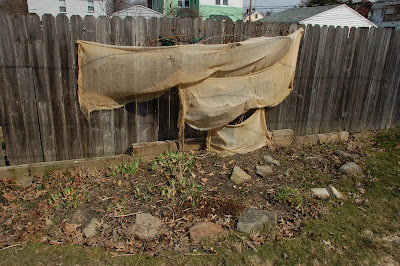
I recently walked home from church and went past some American Holly trees that were about20-30 feet tall. I picked a handful of berries and brought them home. I looked up information on growing Ilex species from seed, and found that they can take 2-3 years to germinate. Also the seeds are usually spread by being eaten by birds, which strips the flesh off the seeds, and broadcasts the seed in the manner you can imagine. So to prepare the seeds, you need to soak them in warm water to ferment and soften the pulp. I did this by putting the berries in a glass of warm water, which I perched on top of the crock pot which Mindy had cooking some beans over night. This kept the water just warm enough to turn the berries soft and brown by morning. Then I rubbed them over a window screen I had in the basement, and rinsed the pulp off the berries. I dug a trench in the back yard in a place where I've been wanting to put a hedge and planted over 300 seeds (there are four seeds in each berry) I figure this will increase my chances of getting enough to germinate and grow, and I can thin out the ones I don't need.

So in 2-3 years I'll have some tiny shoots, and then in about 10 more years I might have something resembling a hedge. God knows whether we'll even be living here by then.

























